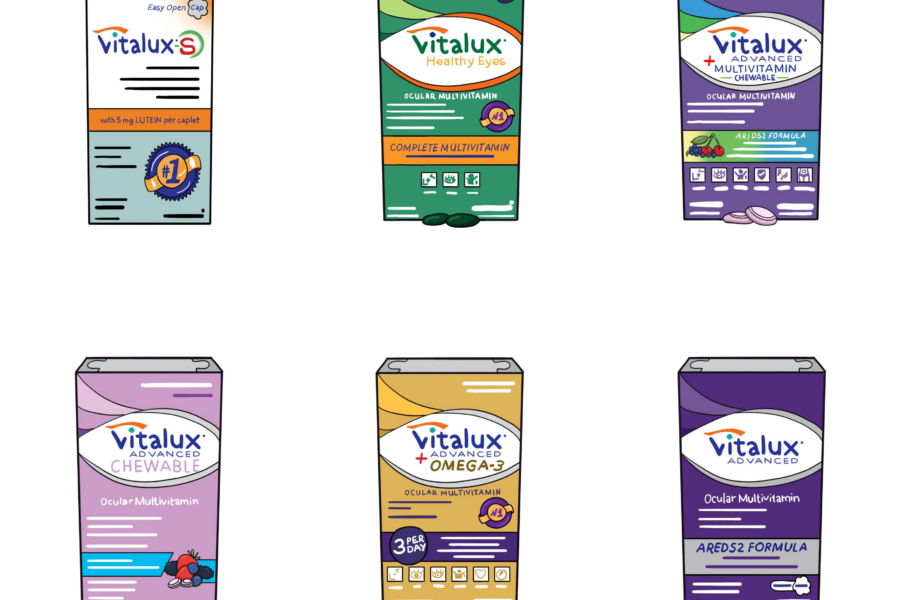What is Vitamin D?
Vitamin D, also known as the ‘sunshine vitamin’, is an important vitamin that often gets overlooked. It is a fat-soluble vitamin meaning it is better absorbed when you eat it with fat and can be stored in the body’s fatty tissue. It helps the body use calcium and phosphorus to build and maintain strong bones and teeth. In countries that get little sunshine, vitamin D deficiency is common.
There are two main types of Vitamin D that are important to humans:
- Vitamin D2 (also known as ergocalciferol): found in sun-exposed mushrooms
- Vitamin D3 (also known as cholecalciferol): produced from the skin when exposed to UVB rays (from sunshine), found in oily fish (such as salmon, mackerel, herring) and cod liver oil
Read on…we have all your questions covered!
- Is Vitamin D Deficiency Common?
- Who is at Risk for Vitamin D Deficiency?
- What Does Vitamin D Do and What is it Good For?
- Where do I Get Vitamin D?
- How Much Vitamin D Should I Get?
- Can I Get Too Much Vitamin D?
- How Do I Know What My Vitamin D Levels Are?
- Bottom Line
Is Vitamin D Deficiency Common?
It is surprisingly common. Vitamin D deficiency is considered a global health problem that affects almost 50% of the population (or more than one billion children and adults) worldwide1. It’s even higher if you have certain risk factors.

Who is at Risk for Vitamin D Deficiency?
If you live in a country such as Canada where you aren’t able to expose your skin to sunlight for most of the year, your skin probably doesn’t make enough Vitamin D. Additionally, there are not too many food sources containing Vitamin D which makes it difficult to get enough from your diet.
Keep in mind that as we age, the skin’s ability to produce vitamin D also decreases 2.
Interesting Fact: The skin’s ability to make vitamin D decreases as we age3. For example, a person aged 70 makes (on average) 25% of the vitamin D that a 20-year-old makes when exposed to the same amount of sunlight.
Here’s a more detailed summary of people who are at risk for low vitamin D1:
- Anyone that doesn’t get enough sun exposure:
- If you completely cover-up when you are in the sun (could be a need or choice)
- If you avoid the sun entirely
- If you don’t get a chance to be in the sun ( for example, even if you sit in a sunny office all day – UVB rays can’t get through your window!)
- If you are ALWAYS wearing sunscreen (I know it’s complicated because UV rays are linked to other health complications)
- Are generally outdoors outside the hours of 10am – 3pm
- Anyone that lives in a location that doesn’t get enough sun exposure:
- Live in a northern or higher altitude location (like Canada)
- Live in a location with a long winter season (like Canada)
- Live in places with high levels of pollution, smog or cloudy days
- Physiological risk factors:
- Pregnant women
- Breastfeeding mothers
- Anyone with increased melanin pigmentation (basically anyone with a darker skin tone)
- Anyone suffering from obesity
- Liver/Kidney conditions
- Older age
What Does Vitamin D Do and What is it Good For?
Everyone has heard of calcium being good for the bones, but we often forget about Vitamin D. One of the main roles of vitamin D (and the most clearly researched) is its role in helping the body absorb calcium and phosphorus from the small intestines. This is important for the growth and development of both bones and teeth. Without vitamin D, only 10-15% of dietary calcium is absorbed and 60% of phosphorus is absorbed4. So, even if your diet contains high levels of calcium, you still need the Vitamin D for absorption. Too little vitamin D decreases calcium and phosphorus levels in the blood which can create health problems such as:
In Children:
In Adults:
Rickets
Osteomalacia (softening of bones)
Osteoporosis (fragile bones – which can lead to fractures)
Vitamin D may also play a role in other diseases and overall mood; however, current available studies aren’t high quality or clear enough to make specific recommendations to really understand the role of vitamin D plays. Here are some examples:
Vitamin D may help those with autoimmune diseases such as multiple sclerosis (MS)5, type 1 diabetes, rheumatoid arthritis and autoimmune thyroid disease
A study found adults taking higher vitamin D amounts had a lower risk of developing MS compared to those taking lower concentrations; therefore, may have a role in risk reduction6. A Finnish study following children from birth found that infants given vitamin D supplements had a nearly 90% lower risk of developing type 1 diabetes compared with children who did not receive supplements7.
Vitamin D may be beneficial in reducing cancer risk
A randomized control trial with 1179 post-menopausal women taking Vitamin D and calcium, showed significantly less cancer rates over 4 years. These cancers included breast, colon, lung, leukemia/myeloma and uterine (and others)8.
Vitamin D may help delay cognitive decline in elderly people
An Italian population-based study found that low levels of vitamin D were associated with a substantial cognitive decline in the elderly population over a 6 year period9. Low levels of vitamin D may be especially harmful when it comes to using higher level brain functions.
Other areas where vitamin D may have a benefit include sleep10, fatigue and post-partum depression11 (and the list does go on!). Again, the evidence isn’t robust enough to make any clear suggestions, but it’s clear it plays a pretty important role in your body.
Where Do I Get Vitamin D?
1. Natural Foods Containing Vitamin D
There are very few natural dietary sources of vitamin D12. Among food sources, vitamin D is mainly present in fatty fish, wild mushrooms, and eggs yolks. Here are some common ones:
1 tablespoon of Cod liver oil –
1,360 IUs per serving
3 ounces of cooked swordfish –
566 IUs
3 ounces of cooked Salmon –
447 IUs (sockeye)
1 large egg (vitamin D in yolk) –
41 IUs
Interesting Fact: IU stands for ‘International Unit’ and and is used to measure the potency. This was first established by The World Health Organization in 1931 in order to standardize the reporting of vitamin D.
Click here for some recipes!
2. Fortified Foods Containing Vitamin D
In Canada, major sources of vitamin D are cow’s milk and margarine which are required to be fortified13. Other foods such as goat’s milk, some soy beverages, and orange juices can be fortified (so check the label). Last, cheese and yogurt can be made with vitamin D fortified milk but would not contain as much vitamin D as milk alone (again, check the label).
3. Sunlight
When your skin is exposed to UVB rays from sunlight, it creates Vitamin D from cholesterol in your skin cells. Bear in mind that there is no concrete time recommendation because it is not clear how this may impact cancer risk13. A Canadian study also found it was difficult to provide guidelines for the right amount of UV exposure because it is inconsistent all year around, it is more challenging during the fall and winter months and darker skinned people have a harder time producing enough vitamin D just from the sun14. Here are some interesting facts:
- During the summer, noon is the best time to get some direct sunlight because UVB rays are the most intense so you don’t need to be out for too long (the body might also be the most efficient at producing Vitamin D at that time).
- Although there are no precise time-limits for being out in the sun to get the right amount of Vitamin D, most studies cited time limits between 13 – 30 minutes, from three times a week to daily (one study found fair skinned people only needed to spend 3 to 8 minutes in the sun to make 400 IU of vitamin D, the length of time would be longer if you have a darker skin tone16).
- Skin exposure is required – so either the legs and arms or hands, arms and face (without sunscreen and covered clothing).
Note: You Don’t Need Too Much Sun! A 10-minute walk in the midday sun can create as much as 15 times the amount of vitamin D that you need every day16.
4. Supplements
Vitamin D supplements are taken orally and can come in a variety of forms such as drops, tablets, capsules, gummies and even a gel snack. Oral supplementation remains the safest and most consistent way to get Vitamin D 13,14,15.
How Much Vitamin D Should I Get?
Here are the recommended dosing guidelines according to Health Canada13
Recommended Dietary Allowance
Tolerable Upper Limit
Infants 0-6 months
400 IU (10 mcg)
1000 IU (25 mcg)
Infants 7-12 months
400 IU (10 mcg)
1500 IU (38 mcg)
Children 1-3 years
600 IU (15 mcg)
2500 IU (63 mcg)
Children 4-8 years
600 IU (15 mcg)
3000 IU (75 mcg)
Children and Adults 9-70 years OR
Pregnancy and Lactation
600 IU (15 mcg)
4000 IU (100 mcg)
Adults over 70
800 IU (20 mcg)
4000 IU (100 mcg)

Can I Get Too Much Vitamin D?
Vitamin D is generally considered safe but it is possible to get too much causing harmful side effects. Too much vitamin D can cause calcium to be deposited in the body’s soft tissues causing calcification of the kidney, heart, lungs and blood vessels13 (ie. Can cause kidney stones12). Vitamin toxicity can occur if you are taking too much (above the tolerable limits) causing symptoms such as anorexia, weight loss, heart arrhythmias and frequent urination12. Vitamin D supplements should be avoided in anyone with hypercalcemia (high calcium levels) and should be used with caution in people with hyperphosphatemia (high phosphate levels).
How Do I Know What My Vitamin D Levels Are?
Most people in Canada will have low vitamin D levels mainly due to low dietary intake and seasonal sunlight. this is especially true for children, adults over 50, pregnant or lactating women. A vitamin D test is not really necessary because it won’t change the outcome. Most people just need to make a few changes to their diet, get a little more sun or start supplements16. If you really want, a vitamin D blood test can be done if you pay for it and but will only be covered if you have a condition that requires it (such as osteoporosis, celiac disease, kidney or liver diseases).
Bottom Line
Most likely, everyone needs a little more vitamin D. This is especially true for children, adults over 50, pregnant and lactating women. Vitamin D can be found in some food sources, fortified foods, sunshine and supplements. If you are taking supplements make sure you check the recommended dose for your category or talk to a health care professional. Too much vitamin D can cause side effects. Avoid these supplements if you suffer from conditions that create high blood levels of calcium of phosphate. Again, if you are living with a chronic or complicated health condition discuss this with a health care professional.
Authors:
Andrew Bates, Jagmanpreet Dang, Hung Le, Henry Ma ; BSc. Pharm Candidates
Faculty of Pharmacy and Pharmaceutical Sciences
University of Alberta
Corresponding Author:
Aliya Kassamali, B.Sc.Pharm, PharmD
Edited and Reviewed by the Health Aisle Team
Last Updated: August 21, 2019
References
1. Holick, M.F. (2017). The vitamin D deficiency pandemic: Approaches for diagnosis, treatment and prevention. Rev Endocr Metab Disord, 18(2):153-165.
2. Osteoporosis Society of Canada. Vitamin D. (2017). Retrieved From https://osteoporosis.ca/bone-health-osteoporosis/calcium-and-vitamin-d/vitamin-d/
3. Holick, M. F. (2004). Sunlight and vitamin D for bone health and prevention of autoimmune diseases, cancers, and cardiovascular disease.The American Journal of Clinical Nutrition, 80(6 Suppl), 88S.
4. Nair, R., & Maseeh, A. (2012). Vitamin D: The “sunshine” vitamin. Journal of pharmacology & pharmacotherapeutics, 3(2), 118–126.
5. Multiple Sclerosis Society of Canada. (2018). Vitamin D and Multiple Sclerosis Recommendations. Retrieved from https://mssociety.ca/library/document/Vka6RXcnOizNm9sIwuWvroxejlhLqTJ8/original.pdf
6. Munger KL, Levin LI, Hollis BW, Howard NS, Ascherio A. (2006). Serum 25-Hydroxyvitamin D Levels and Risk of Multiple Sclerosis. JAMA, 296(23): 2832–2838.
7. Hyppönen E, Läärä E, Reunanen A, Järvelin MR, Virtanen SM. Intake of vitamin D and risk of type 1 diabetes. (2001). A birth-cohort study. Lancet, 358:1500–3.
8. Lappe JM, Travers-Gustafson D, Davies KM, Recker RR, Heaney RP. (2007). Vitamin D and calcium supplementation reduces cancer risk: results of a randomized trial. Am J Clin Nutr, 85(6):1586-91.
9. Lewellyn DJ, Lang IA, Langa KM, Muniz-Terrera G, Phillips CL, Cherubini A, et al. ( 2010). Vitamin D and risk of cognitive decline in elderly persons. Arch Intern Med, 170:1135–41.
10. Majid MS, Ahmad HS, Bizhan H, Hosein HZM, and Mohammad A (2018). The Effects of Vitamin D Supplement on the Score and Quality of Sleep in 20-50 Year Old People With Sleep Disorders Compared With Control Group. Nutritional Neuroscience, 21(7): 511-519.
11. Rouhi M, Rouhi N, Mohamadpour S, and Tajirishi HPR (2018). Vitamin D Reduces Postpartum Depression and Fatigue Among Iranian Women. British Journal of Midwifery, 26(12): 787-793.
12. National Institute of Health. (2019). Vitamin D Fact Sheet. Retrieved from https://ods.od.nih.gov/factsheets/VitaminD-HealthProfessional/#h4
13. Health Canada. (2019). Vitamin D and Calcium: Updated Dietary Reference Intakes. Retrieved from https://www.canada.ca/en/health-canada/services/food-nutrition/healthy-eating/vitamins-minerals/vitamin-calcium-updated-dietary-reference-intakes-nutrition.html
14. Gill, P., & Kalia, S. (2015). Assessment of the feasibility of using sunlight exposure to obtain the recommended level of vitamin D in Canada. CMAJ open, 3(3), E258–E263. doi:10.9778/cmajo.20140037
15. Terushkin, Vitaly et al. (2010) Estimated equivalency of vitamin D production from natural sun exposure versus oral vitamin D supplementation across seasons at two US latitude. Journal of the American Academy of Dermatology, 62(6), 929.e1 – 929.e9
16. Choosing Wisely Canada. Retrieved From https://choosingwiselycanada.org/vitamin-d-tests/




Leave a Comment